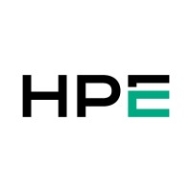

Find out in this report how the two Container Management solutions compare in terms of features, pricing, service and support, easy of deployment, and ROI.
| Product | Market Share (%) |
|---|---|
| Red Hat OpenShift Container Platform | 19.8% |
| HPE Ezmeral Container Platform | 1.2% |
| Other | 79.0% |

| Company Size | Count |
|---|---|
| Small Business | 14 |
| Midsize Enterprise | 4 |
| Large Enterprise | 39 |
Accelerate your journey to hybrid cloud with the industry’s first enterprise-grade container software platform for cloud-native and distributed non-cloud native applications.
Red Hat® OpenShift® offers a consistent hybrid cloud foundation for building and scaling containerized applications. Benefit from streamlined platform installation and upgrades from one of the enterprise Kubernetes leaders.
We monitor all Container Management reviews to prevent fraudulent reviews and keep review quality high. We do not post reviews by company employees or direct competitors. We validate each review for authenticity via cross-reference with LinkedIn, and personal follow-up with the reviewer when necessary.